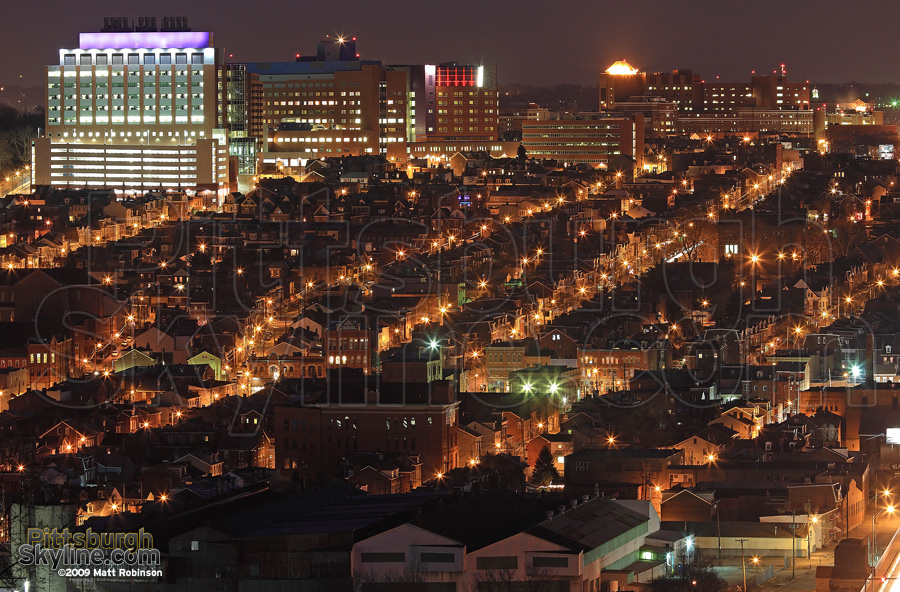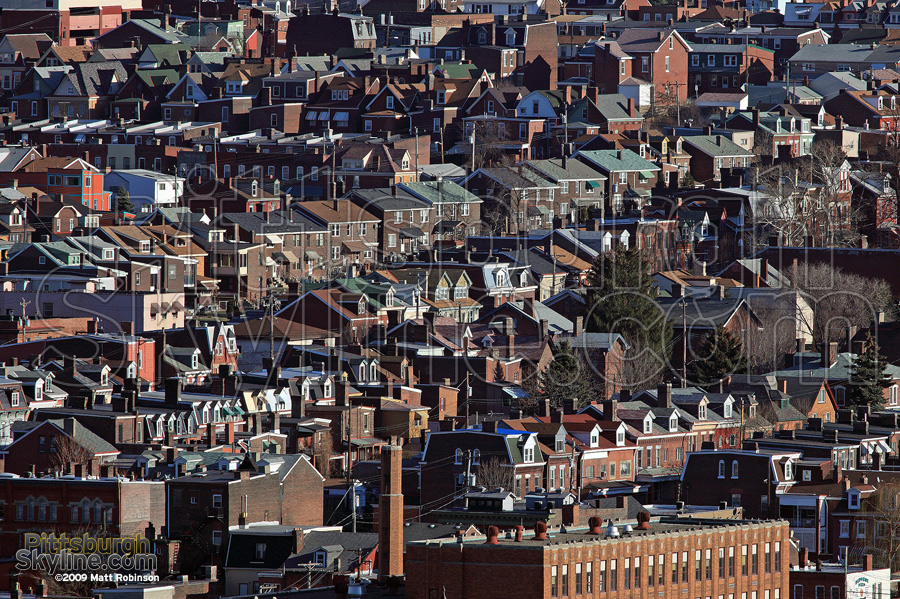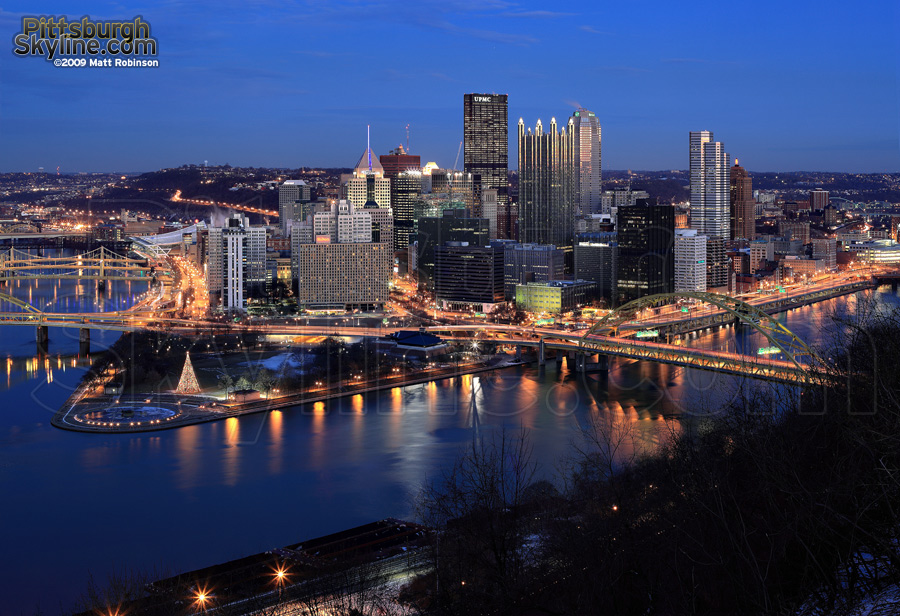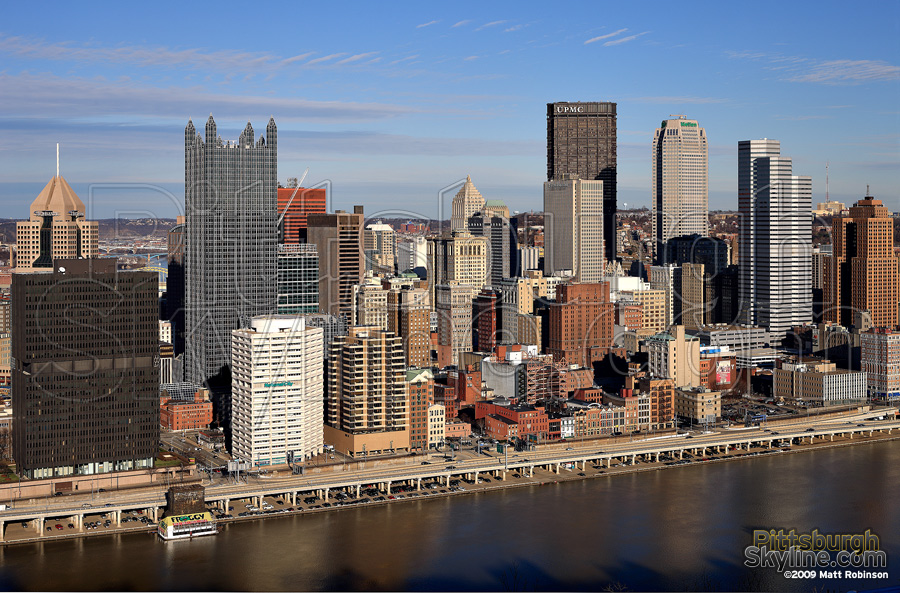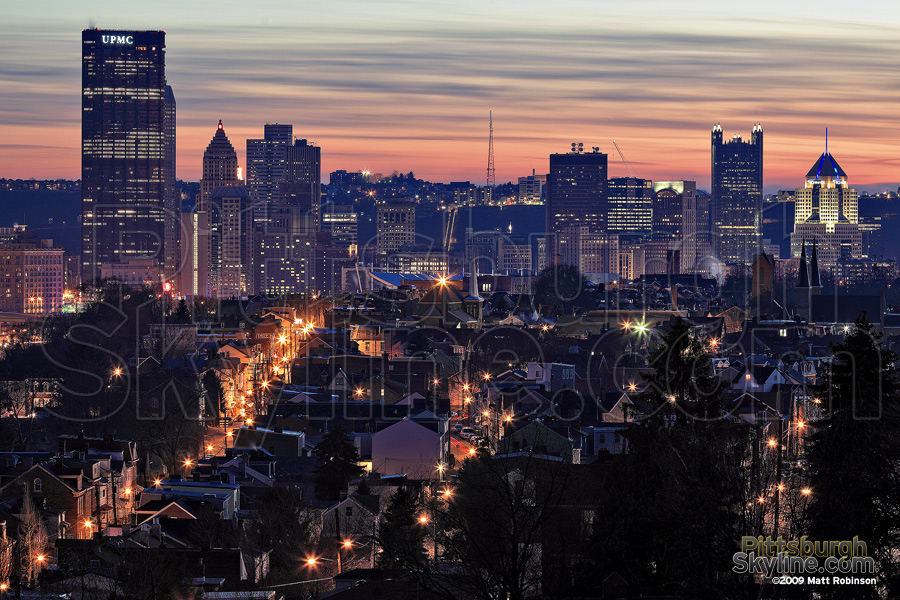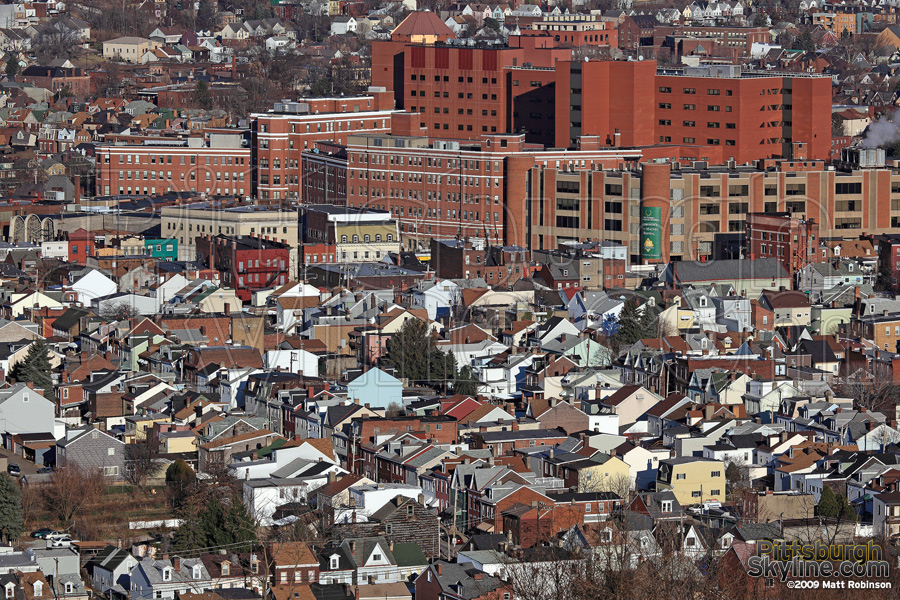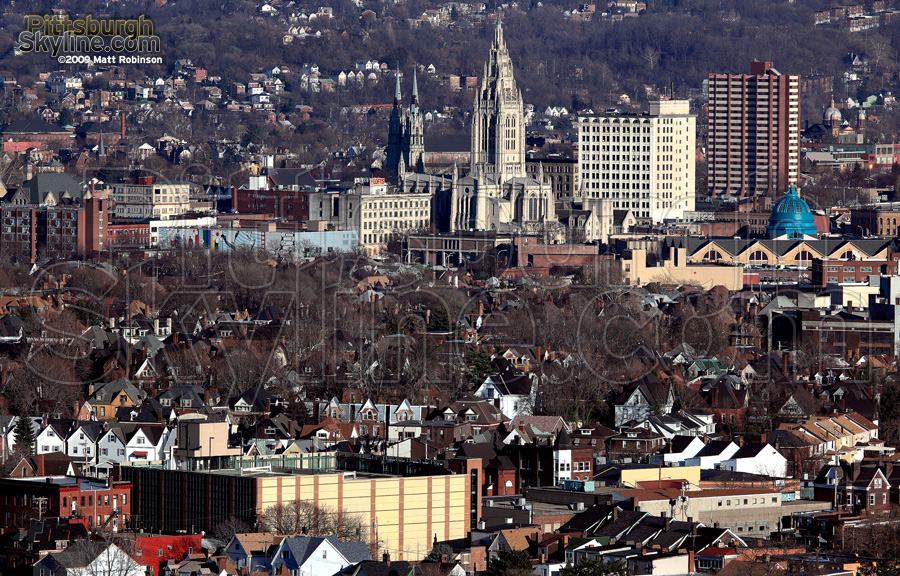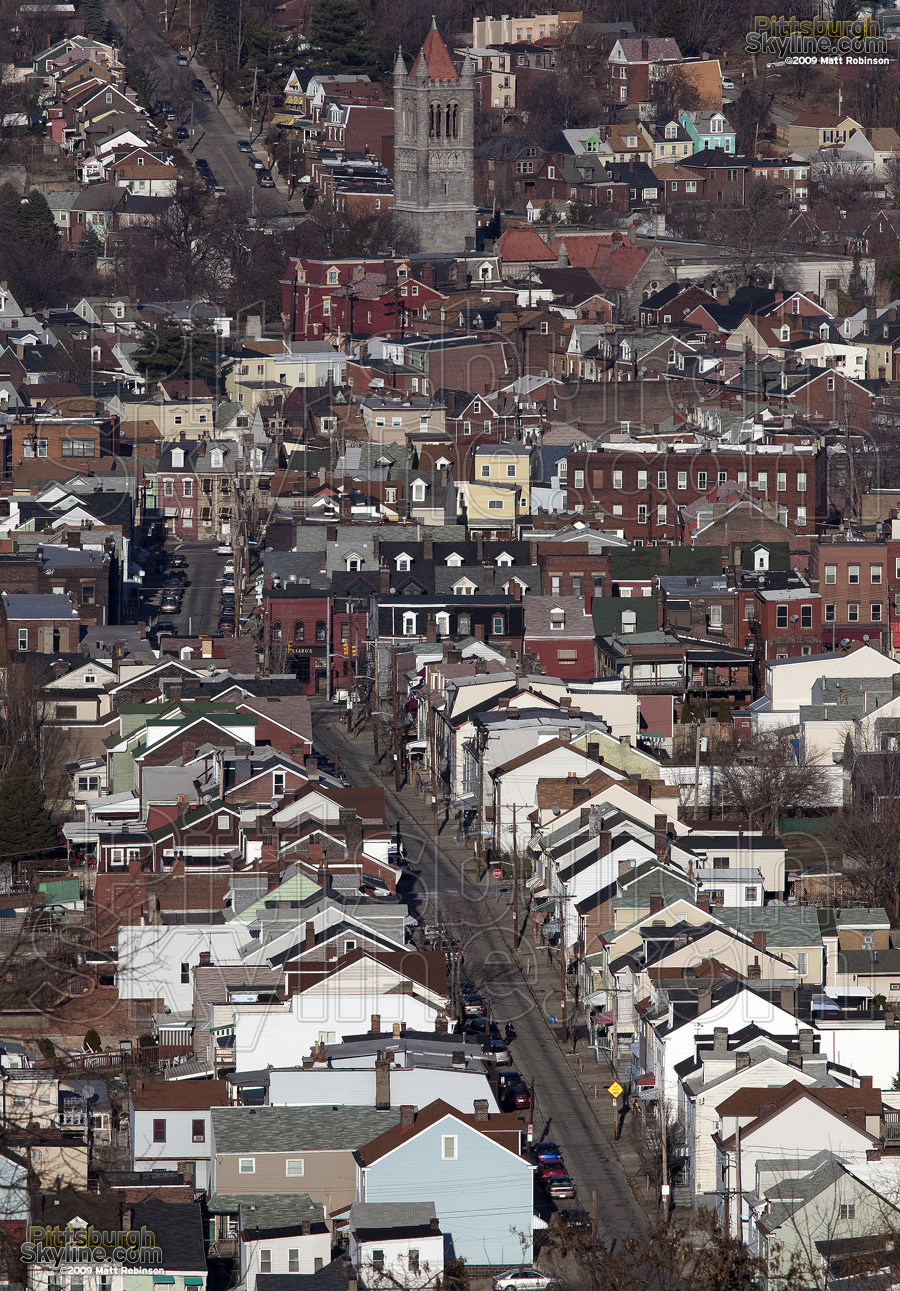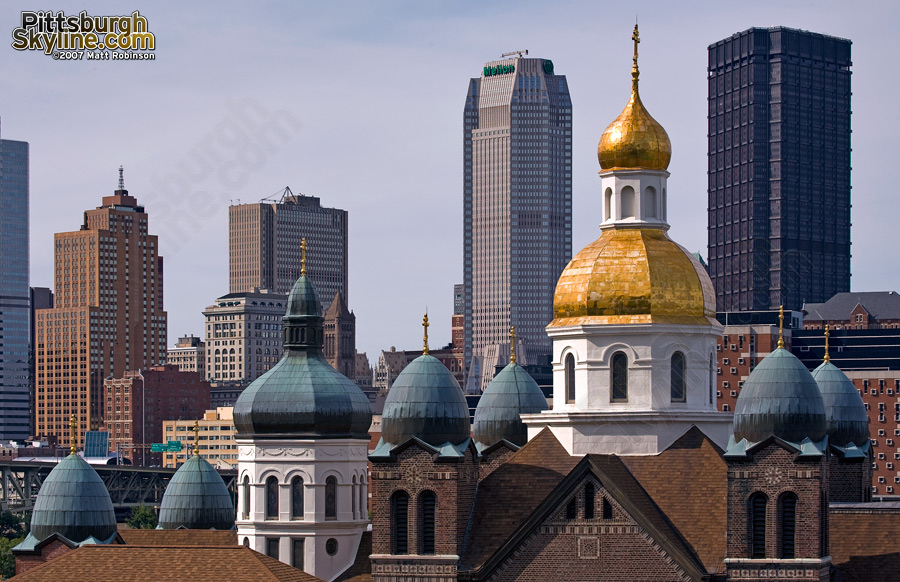When it comes to the Pittsburgh region's reputation, we shouldn't forget how Representative John Murtha (D) nearly blew his reelection by referring to a lot of his Western PA constituents as rednecks.
Then there's this piece
http://www.nytimes.com/2009/01/08/business/economy/08collapse.html?_r=2&hp
January 8, 2009
For Pittsburgh, There’s Life After Steel
By DAVID STREITFELD
PITTSBURGH — This is what life in one American city looks like after an industrial collapse:
Unemployment is 5.5 percent, far below the national average. While housing prices sank nearly everywhere in the last year, they rose here. Wages are also up. Foreclosures are comparatively uncommon.
A generation ago, the steel industry that built Pittsburgh and still dominated its economy entered its death throes. In the early 1980s, the city was being talked about the way Detroit is now. Its very survival was in question.
Deindustrialization in Pittsburgh was a protracted and painful experience. Yet it set the stage for an economy that is the envy of many recession-plagued communities, particularly those where the automobile industry is struggling for its life.
“If people are looking for hope, it’s here,†said Sabina Deitrick, an urban studies expert at the University of Pittsburgh. “You can have a decent economy over a long period of restructuring.â€
Pittsburgh’s transition has been proceeding for decades in fits and starts, benefiting some areas much more than others. A development plan begun in the 1980s successfully used the local universities to pour state funds into technology research.
Entrepreneurship bloomed in computer software and biotechnology. Two of the biggest sectors are education and health care, among the most resistant to downturns. Prominent companies are doing well. Westinghouse Electric, a builder of nuclear reactors, expects to hire 350 new employees a year for the foreseeable future. And commercial construction, plunging in most places, is still thriving partly because of big projects like a casino and an arena for the Penguins hockey team.
The question is whether Pittsburgh can serve as a model for Detroit and other cities in the industrial Midwest as they grapple with large-scale cutbacks in the automotive industry. Even with the federal government’s $17.4 billion bailout, General Motors, Chrysler and Ford are expected to continue shrinking.
The unemployment rate in Michigan, already close to 10 percent, will undoubtedly rise further. State and federal officials will have to increase the number of retraining programs, and develop a postindustrial policy that ensures there is something for the graduates to do. That will take patience and money, two commodities in short supply.
About 4 percent of Michigan workers make cars and parts, with many more employed in related fields. Few regions are as dependent on a single heavy industry. But the history of Pittsburgh, where steel workers fell from as much as 10 percent of the work force in 1980 to less than 1 percent today, offers proof that revitalization is possible.
One reason Pittsburgh looks better in the bust is because it never had a real estate boom. That might have been a cause for complaint among homeowners who missed out on soaring values in California and Florida in the first half of the decade, but these days they can only be grateful.
Housing prices in Pittsburgh were up 2.2 percent for the year ending September 2008 despite a slight drop in the latest quarter, according to the government’s House Price Index. That compares with a 4 percent drop for the United States as a whole.
The big local bank, PNC, was resolutely unadventurous during the housing frenzy. It just acquired Cleveland-based National City, which made too many bad loans. That will solidify Pittsburgh’s standing as one of the country’s major banking centers.
Yet the semisweet spot that Pittsburgh finds itself in was never inevitable. As recently as 2000, it had a higher unemployment rate than Detroit or Cleveland. Just as Michigan has traditionally put all its chips on the auto industry, it took Pittsburgh a long time to come to terms with the end of the steel era.
“The emphasis was on fighting the presumed causes of the decline by getting rid of low-cost foreign imports or providing more subsidies,†said Harold D. Miller, president of Future Strategies, a consultancy. “The assumption was that steel will come back and we’ll go back to the way we were.â€
There were moments when the rebirth of steel seemed plausible, if not imminent. Ryan Campbell grew up in the shadow of the great Homestead Works, now the site of a vibrant shopping mall. When he graduated from college in 2001, steel drew him in.
Mr. Campbell took a job at a small specialty mill as a foreman. He loved it — the huge cranes delicately pouring pots of molten fire, the camaraderie on the production line, the proud heritage of making something tangible — but soon realized he could never make a career there.
Overburdened with retiree pension and health care costs, competing against both imports and modern minimills, the steel industry was convulsing again. An initial round of layoffs at Mr. Campbell’s mill was followed by a second, then a third. “I need to go paddle on a different boat,†Mr. Campbell told himself.
He posted a résumé online and was sought out by recruiters for Medrad Inc., a health care company founded by an emergency room doctor in 1964 in Pittsburgh. Now a unit of the German pharmaceutical giant Bayer, Medrad last year opened its fourth facility in the area, this one for making disposable syringes. Mr. Campbell, 31, is a production manager.
Career transitions could hardly be more painless, but Mr. Campbell has sympathy for his former colleagues, many of whom had a much more difficult time.
Some would be laid off, work in a grocery store or wait tables, and then go back when business picked up a bit, Mr. Campbell said. It was a rational thing to do: The mill would pay perhaps $17 an hour, much more than a restaurant or store.
Mark Conkle considers himself a retraining success, too, but his experience demonstrates how difficult it will be for many laid-off autoworkers to match their factory income.
Mr. Conkle worked for 15 years for Ross Mould Inc. in Washington, southwest of Pittsburgh, as a unionized production machinist. He was making $23 an hour when he was laid off in 2005.
Some laid-off colleagues went directly to machine shops for $10 or $11 an hour. Mr. Conkle took the harder route of retraining, enrolling in a 16-month technical program. His unemployment benefits and his wife Amanda’s job as a postal carrier carried the family through.
Last February, Mr. Conkle, 40, was hired as a maintenance specialist at the Monongahela Valley Hospital, a 226-bed hospital that is the third-largest employer in Washington County and is still growing. He makes $15 an hour, and in this economy is happy to have it. “You’ve got to take a job, no matter what it’s paying,†he said. “Companies know it.â€
The forces buffeting the larger economy are beginning to touch Pittsburgh. Sony recently announced the closing of its Westmoreland County plant, its last television manufacturing factory in the United States. The plant had already been cut to 560 workers from 3,000 a few years ago. And Alcoa, which employs more than 1,500 people here, said Tuesday it was cutting 13 percent of its worldwide staff.
Even health care is affected. The Medrad plant has a hiring “pause.†Built for 500 workers, it has only about 95.
“Folks who are laid off should be given a chance to remake their lives,†said Barney Oursler, co-director of the Mon Valley Unemployed Committee. But “there are never enough good jobs.â€
Particularly now. Pittsburgh had the luxury of reshaping itself while the rest of the United States economy was relatively strong. Unemployed steel workers could leave for the booming Sun Belt, helping the city and region shrink to a more manageable size. The metropolitan area of about 2.4 million has 200,000 fewer residents than in 1980.
With the entire country reeling, that escape valve is closed. A few weeks ago, Bill Shever was laid off from his job in a metal sidings plant in Valencia, north of Pittsburgh. He would relocate, but has not heard of any place where skilled labor is in demand.
“Times are tough all over,†said Mr. Shever, 47. “I might as well stik it out here.†He said two specialty steel companies seemed to be holding their own, and he would try them first.






